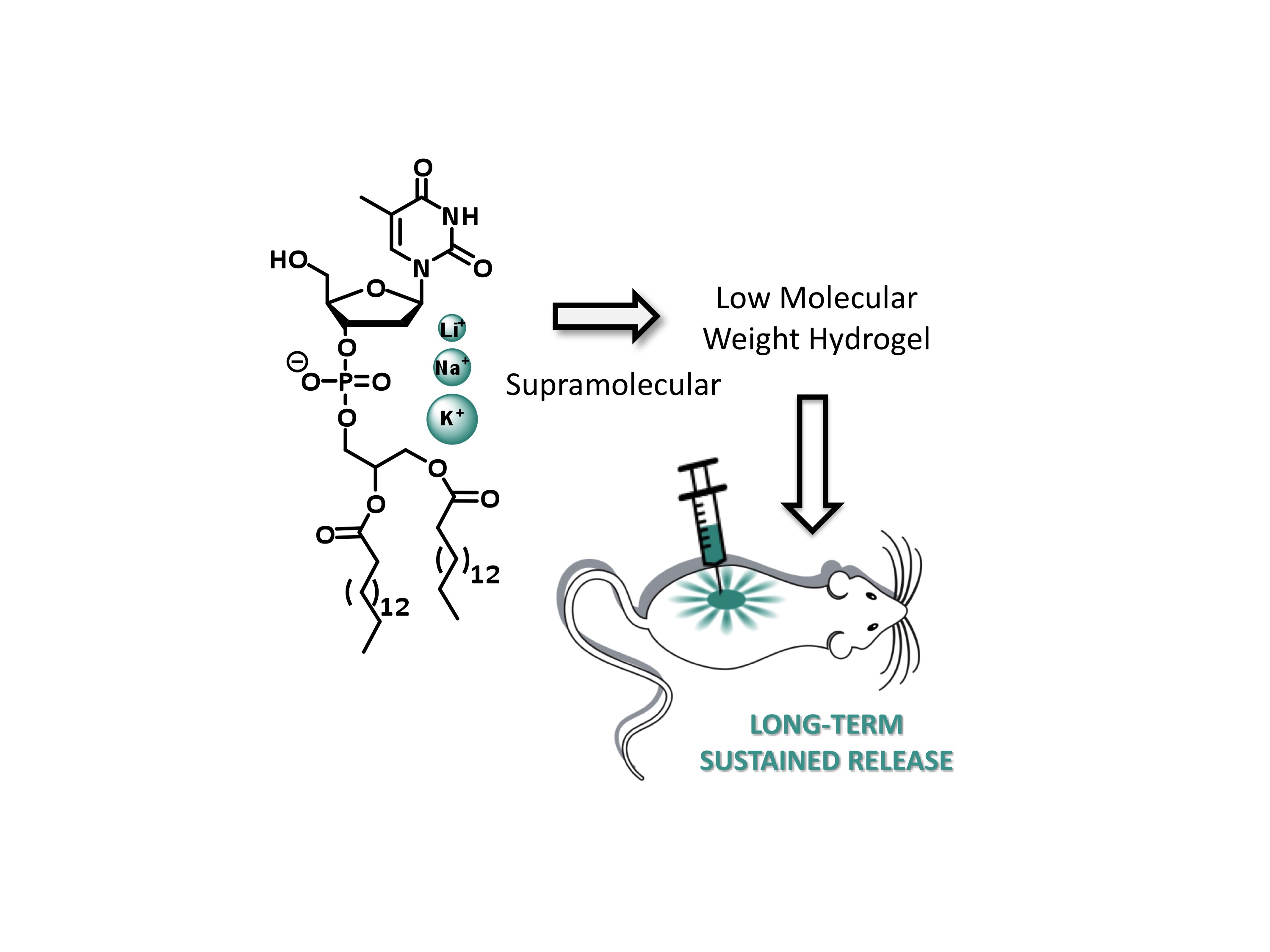The bioinspired molecular and supramolecular systems developped in the lab are designed for the delivery of therapeutic molecules including small drugs, biomolecules such as DNA, RNA, siRNA (Nucleolipoplexes, Nanostructured materials) and modified oligonucleotides. The novel systems obtained are used to address important drug delivery issues.
Cation Tuning of Supramolecular Gel Properties: A New Paradigm for Sustained Drug Delivery
Soft materials such as hydrogels are extensively investigated as scaffolds for biomedical applications including drug delivery and tissue engineering. In parallel to advances in polymericbased hydrogels, low-molecular-weight gelators (LMWGs), which spontaneously self-assemble into hydrogels in aqueous environments, are of significant interest as novel molecularly tunable macroscopic scaffolds. Such materials are finding use as a 3D scaffold and matrix for cell growth. Designing injectable hydrogel scaffolds for the delivery of proteins with optimal material characteristics (encompassing adequate mechanical properties, stiffness, thixotropy, controllable gelation, self-healing, biodegradability, biocompatibility, biostability, etc.) remains one of the key challenges for in vivo drug-delivery applications.
See also
M. A. Ramin, K. R. Sindhu, A. Appavoo, K. Oumzil, M. W. Grinstaff, O. Chassande, P. Barthélémy, (2017) Advanced Materials DOI: 10.1002/adma.201605227

Solid Lipid Nanoparticles for Image-Guided Therapy applications (Theranostic)
The magnetic resonance imaging (MRI) approach has been gradually inves4gated in order to enable image-guides treatments. We are currently developping a new approaches based on nucleoside-lipids allowing the synthesis of solid lipid nanoparticles
See also
K. Oumzil, M. A. Ramin, C. Lorenzato, A. Hemadou, J. Laroche, M. J. Jacobin-Valat, S. Mornet, C.-E. Roy, T. Kauss, K. Gaudin, G. Clofent-Sanchez, and P. Barthélémy (2016) Solid Lipid Nanopar4cles for Image-Guided Therapy of Atherosclerosis. Bioconjugate Chemistry 27 (3), pp. 569-575

Responsive nucleolipids: A route to smart nano-vehicles
The site-specific release via a programmed release of therapeutics is emerging as a promising approach to address the drug delivery issue. Among the various existing stimuli-responsive options the microenvironmentally pH- or red/ox sensi4ve delivery systems have been widely studied for biomedical applications. In the case of pH, the changes in the external pH can be exploited by pH-responsive systems, which respond to pH changes with altered physicochemical properties ensuring the triggered release of the drug in an acidic environment.
Orthoester Nucleoside Lipids (ONLs) allowing the formation of pH-cleavable liposomes. These hybrid nucleolipids can be hydrolyzed at a biologically relevant pH to provide nontoxic nucleoside derivatives and hexadecanol. When ONLs are mixed with natural phosphocholine lipids, the liposomes evolve towards the formation of lamellar systems. Stable Nucleic Acid Lipid Particles (SNALPs) formulated with siRNAs and ONLs were able to release their nucleic acid payload in response to an intracellular acidic environment. More details can be found in the Communication by Philippe Barthélémy et al. on page 1797 in Issue 11, 2015 (DOI: 10.1002/cmdc.201500381).
 Orthoester Nucleoside Lipids (ONLs) allowing the formation of pH-cleavable liposomes.
Orthoester Nucleoside Lipids (ONLs) allowing the formation of pH-cleavable liposomes. 
